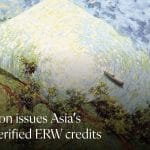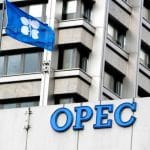Rio Tinto Invests $22 Million in Calix’s Low-Emissions Steel Project

• Rio Tinto commits more than A$35 million ( $22 Million ) to help advance Calix’s hydrogen-enabled Zesty steel technology in Western Australia.
• The partnership supports a demonstration plant designed to process Pilbara iron ore with lower emissions using electric heating and hydrogen reduction.
• Western Australia positions green iron as a strategic industry backed by ARENA funding, emerging industrial hubs, and government procurement preferences.
Rio Tinto has signed a Joint Development Agreement with Australian environmental technology company Calix to accelerate a demonstration plant for low-emissions iron production in Kwinana, south of Perth. The deal brings industrial weight to a technology designed to produce green iron from Pilbara ore using electric heating and hydrogen reduction. It also provides an alternative development path as Rio Tinto adjusts timelines for its own BioIron programme.
The demonstration facility, known as the Zesty Green Iron plant, would replace the previously planned BioIron research and pilot complex at the same Kwinana site. Rio Tinto concluded that the current BioIron furnace configuration requires further refinement to reduce technical risk, but the company remains invested in the technology’s long-term potential through ongoing work with the University of Nottingham and Metso.
A portfolio approach to low-emissions steel
The partnership gives Rio Tinto access to an emerging low-carbon route compatible with lower-grade iron ore — a critical advantage as steelmakers seek alternatives that can scale across varying ore qualities. The Zesty process uses Calix’s electric calciner technology paired with hydrogen, placing it within the landscape of technologies vying to decarbonise an industry responsible for an estimated 8 percent of global emissions.
Rio Tinto Iron Ore Chief Executive Matthew Holcz framed the agreement as part of a wider strategic effort to secure multiple decarbonisation pathways. He said global demand for low-emissions steel is growing and “Pilbara iron ores must be positioned to meet it as new technologies emerge.” The company will support the project with technical expertise, engineering input, and access to its network of customers.

Rio Tinto will also supply up to 10,000 tonnes of Pilbara ore for commissioning and early-stage testing once the plant reaches construction and operational approval.
Western Australia eyes green iron as a new export pillar
The state government has moved decisively to position green iron as a future industrial base. Premier Roger Cook said that locally produced low-emissions iron fits into Western Australia’s ambition to become a renewable-energy manufacturing hub, and noted that the government will apply an “if not, why not” approach to green steel procurement in major public projects.

The Kwinana industrial zone gives the demonstration plant access to established utilities, export links, and emerging downstream facilities, including the NeoSmelt project. That effort, backed by a consortium of five companies including Rio Tinto, received ARENA support earlier this year to advance low-carbon smelting options that could process Zesty’s direct reduced iron.
RELATED ARTICLE: Rio Tinto Signs Australia’s Largest Renewable Energy Venture for Gladstone Operations
Financing structure and national implications
The partnership is anchored in a combined funding arrangement supported by both industry and government. Rio Tinto’s more than A$35 million contribution — a mix of cash and in-kind support — will help Calix progress the demonstration plant toward a Final Investment Decision. The project also benefits from a previously announced A$44.9 million ARENA grant, contingent on milestones.
For Calix, the agreement provides financial backing and access to a global supply chain. CEO Phil Hodgson called the JDA an “important step in demonstrating the commercial potential of Zesty,” noting that it aligns with Australia’s economic exposure to iron ore exports and the need to future-proof the sector against tightening carbon constraints in global steel markets.

What industry leaders should watch
If the plant proceeds, it will test whether low-grade ores — historically more dependent on coal-intensive routes — can be used in hydrogen-based production at commercial scale. That outcome would be relevant for steelmakers across Asia, the Middle East, and Europe, where supply security and ore compatibility are central to decarbonisation planning.
The agreement also includes a non-exclusive global and perpetual licence, allowing Rio Tinto to deploy or sub-license the Zesty technology across its customer base. That structure gives the technology potential reach well beyond Australia if early trials are successful.
A global lens on regional ambition
The Kwinana project illustrates how resource-rich regions are repositioning industrial assets in a decarbonising global economy. Western Australia, heavily reliant on iron ore royalties, is moving upstream into green iron as international buyers prepare for carbon-related border measures and more stringent procurement rules.
For global investors and climate-policy leaders, the story centres on whether hydrogen-enabled ironmaking can scale quickly enough to meet tightening climate timelines. Australia’s approach — pairing public funding with large-scale industrial partners — offers a model other mining jurisdictions may emulate as they seek to maintain relevance in low-carbon steel supply chains.
If successful, the Zesty plant would give Pilbara ore a pathway to stay competitive in an industry under intense pressure to curb emissions, and position Western Australia as a key contributor to the next chapter of green metals globally.
Follow ESG News on LinkedIn












